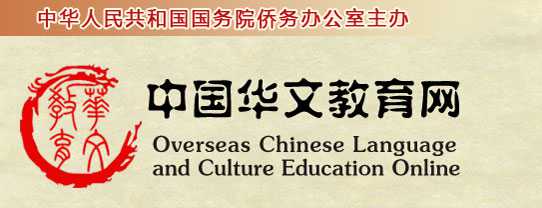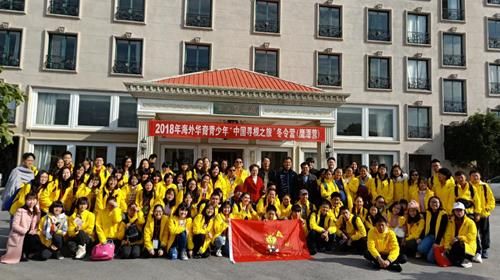|
四灵 Four Deities --Symbol of Auspice in Ancient Times
2009年09月03日 09:04
四灵——古代吉祥的象征 中国古代认为麒麟(qilin)、凤凰、龟和龙是有灵性的动物,因此,把它们称为“四灵”,作为祥瑞的标志。其实,除了龟以外,其它三种都是传说中的动物,是人们自己想象和创造出来的。 传说中的麒麟,身体像鹿,遍体披?鳞甲,头上长独角,角上生有肉球,脚像马蹄,尾像牛尾。麒麟被认为是有德性的仁兽,历代帝王都把它看作是太平盛世的象征。在北京的故宫和颐和园等皇帝的住处和花园里,都能见到麒麟,有铜铸的,也有石雕的。在民间,麒麟也很受重视。春节期间,中国江南各地的人们常常抬?纸扎的麒麟,到各家门前表演,表达美好的祝愿。另外,在中国还有“麒麟送子”的传说,人们一方面用麒麟象征有出息的子孙;另一方面也表示了祈望早生贵子、家道繁荣的意思。 凤凰头顶美丽的羽冠,身披五彩翎毛,它是综合了许多鸟兽的特点想象出来的瑞鸟形象。凤凰是中国传说中的“百鸟之王”,标志吉祥、太平和政治的清明。凤和龙一样,被历代帝王当作是权力和尊严的象征。凤冠、凤车等与凤有关的东西,只有皇家和仙人才能使用。不过,后来凤凰也成了民间百姓的吉祥物。尤其在中国传统的婚礼上,凤成了新娘礼服和头饰上的装饰,代表吉祥和喜庆。在民间的传统图案纹样中,凤凰也被广泛应用,寓意?吉祥和太平。凤凰还常和其它吉祥物配合成纹图,如“龙凤呈祥”、“凤麒呈祥”等,也是吉祥如意的象征。 龟在四灵中是唯一存在的动物,也是动物中寿命最长的。人们不仅把龟当成健康长寿的象征,还认为它具有预知未来的灵性。在古代,每当举行重大活动之前,巫师都要烧烤龟甲,然后根据龟甲上爆裂的纹路来占卜吉凶。所以,人们称龟为“神龟”、“灵龟”。神龟在中国曾经受到过极大的尊敬,在古代帝王的皇宫、宅院里,都有石雕或铜铸的神龟,用来象征国运的久远。 龙被人们认为是中国最大的神物,也是最大的吉祥物。人们都很熟悉龙的形象,但是谁也没见过真的龙。龙和凤、麒麟一样,是人们想象出来的动物,它长牛头、鹿角、虾眼、鹰爪、蛇身、狮尾,通身还长满了鳞甲,是由多种动物复合而成的。在人们的想象中,龙能在地上行走,能在水中游弋,能在云中飞翔,充满了无穷的神力。几千年来,封建帝王把它当作权力和尊严的象征,普通老百姓也认为它是美德和力量的化身,是吉祥之物。因此,在中国到处都可以见到龙的形象。宫殿、寺庙的屋脊上,皇家的用具上,处处刻?龙、画?龙;老百姓在喜庆的日子里,也要张贴龙的图案,还要舞龙灯、划s船;给孩子起名字也愿意用上“龙”字。龙作为“四灵”中最大的吉祥物,已成为中华民族的象征。全世界各地的中国人都认为自己是“龙的传人”。 Four Deities --Symbol of Auspice in Ancient Times In ancient China, people considered the kylin, the phoenix, the tortoise and the dragon as sagacious animals, calling them the "Four Deities" as the symbol of propitious omen. In fact, besides the tortoise, the other three are legendary animals created by ancient Chinese. The legendary kylin has a deer's body covered all over with scales, one horn on the head, horse's feet and an ox's tail. It is considered as an animal of morals and benevolence and all previous monarchs considered it symbolic of times of peace and prosperity. The kylin can be found in the emperor's dwellings and gardens in the Imperial Palace and the Summer Palace in Beijing, either made of copper or stone. The Chinese people also think highly of the kylin. In the Spring Festival, people living south of the Yangtze River often carry a paper kylin to express their best wishes to others. There is also a legend of "Kylin Sending a Son" in China: On one side, people use the kylin to symbolize promising descendents; and on the other, they wish to have a son soon and see the family flourish. The phoenix wears a beautiful crest and multi-colored plumage; it is an imagined auspicious bird combining features of many birds and animals. The phoenix is the "king of Birds" in Chinese legends, indicating auspiciousness, peace and good government. Just like the dragon, the phoenix was considered a symbol of power and dignity by ancient monarchs. The phoenix coronet, phoenix cart and anything related to the phoenix could only be used by the royal family and immortals. However, later the phoenix also became the mascot of ordinary people. Particularly in traditional Chinese weddings, the phoenix becomes an ornament on the bride's wedding dress and headdress, representing auspiciousness and festive rejoicing. The phoenix is also widely used on traditional decorative patterns among Chinese people, implying auspiciousness and peace. The phoenix is often used with other mascots to form new patterns, such as "Prosperity Brought by the Dragon and the Phoenix" and "Prosperity Brought by the Phoenix and the Kylin", also symbolizing that everything is as lucky as one would wish. The tortoise is the only existing animal among the four deities, and also the animal enjoying the longest life. People not only see the tortoise as a symbol of health and longevity, but also believe that it has the sagacity to foresee the future. In ancient times, before important activities were held, a wizard would roast a tortoise shell and then practice divination according to the way the lines split on it. Therefore, people call the tortoise the "divine tortoise" or "sagacious tortoise". The divine tortoise was highly respected in ancient China. In the imperial palace and residences of ancient monarchs, there were stone or copper tortoises to symbolize the longevity of the national destiny. The dragon is considered the largest divine animal in China, and its most popular mascot. In this case, the dragon has an ox head, deer's horn, shrimp's eyes, eagle's claws, snake's body and lion's tail; its body is covered with scales, and it is really a combination of many animals. As people imagine, the dragon can walk on land, swim in water, and fly in the clouds, with inexhaustible magical power. For thousands of years, feudal monarchs held it as the symbol of power and dignity, and ordinary people believed that it was embodiment of virtue and strength. Thus, the dragon can be found everywhere in China. The roofs of palaces and temples, and the furniture of the royal family were all carved or drawn with a dragon. On festive occasions, ordinary people put up pictures of the dragon, dance with a dragon lantern and row a dragon boat. People like to name their children with the Chinese character of the dragon. The dragon has become the symbol of the Chinese nation. And all the Chinese throughout the world think themselves as the "offspring of the dragon". 1.河北省承德须弥福寿之庙妙高庄严殿之金龙 A golden dragon sculpture on the roof of a temple in Hebei Province 2.皇帝大典时穿的龙袍 This silk dragon embroidered robe is worn by the emperor on the day of enthronement. 3.被称为“百鸟之王”的凤凰 The phoenix is known as the "King of Birds" 4.明十三陵的墓道两旁分列?麒麟等石兽 The stone sculptures of kylins and sagacious animals flank both sides of the pathway which leads to the Thirteen Tombs of the Ming Dynasty. 5.龟象征长寿 The tortoise symbolizes health and longevity. 6.龙 The Dragon 7.明世宗嘉靖皇帝的陵墓前的龙凤石雕 The mausoleum of Emperor Jiajing of Ming Dynasty (1368-1644 AD) is decorated with stone sculpture of phoenix and dragon.
【来源:中国华文教育网】
|
|






















